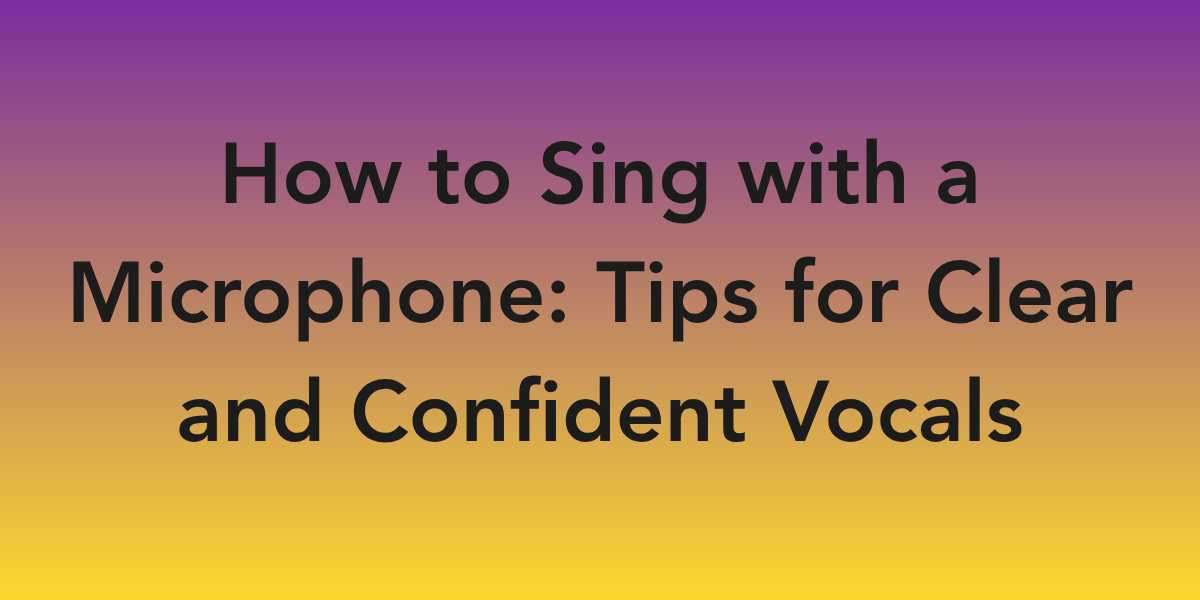Singing with a microphone may seem simple, but mastering it is an art. A microphone can make your voice sound powerful, intimate, or expressive but only if you know how to use it correctly. Whether you’re performing live or recording in a studio, good mic technique separates professionals from beginners.
In this guide, you’ll learn the best practices to improve your control, clarity, and confidence when singing with a microphone.
Understanding Your Microphone
Before diving into performance tips, it’s essential to understand the type of microphone you’re using. The most common ones for singers are dynamic and condenser mics.
Dynamic mics are great for live performances because they handle high volumes without distortion.
Condenser mics are more sensitive and are often used in studios for capturing fine vocal details.
Knowing your mic type helps you adjust your distance, tone, and projection accordingly.
Mastering Distance and Position
One of the most important mic singing tips is learning how to control distance. Holding the mic too close can cause popping sounds and muffled tones, while holding it too far weakens your voice.
A good rule of thumb is to keep the mic about one to two inches away from your mouth. Move slightly closer for softer parts and a bit farther for louder notes. This helps maintain consistent volume and tone throughout your song.
Control Your Breathing and Plosives
Microphones pick up every detail, including your breath and “popping” consonants like P and B. To minimize this, angle the mic slightly away from the direct line of your mouth and use a pop filter when recording.
Practicing controlled breathing will also reduce unwanted sounds and keep your tone clear and professional.
Use the Mic to Express Emotion
A microphone is more than just a tool it’s an extension of your performance. Subtle changes in how you hold or move the mic can completely alter your audience’s experience.
For softer, emotional moments, bring the mic closer to capture intimacy. For powerful sections, pull back slightly to avoid distortion. Watch how professional singers use mic movement to enhance dynamics and emotion on stage.
Avoid Common Mistakes
Many new singers make the mistake of gripping the mic too tightly or covering the grille with their hands. This blocks airflow and muffles your sound. Hold the mic firmly but comfortably, keeping your hands below the head of the microphone.
Another mistake is relying entirely on the mic for power. Remember, the microphone amplifies what you already produce it doesn’t fix poor technique. Maintain good posture, breath control, and projection at all times.
Practice with Real Equipment
Just like you train your voice, you should also train your mic technique. Practice singing with the same type of microphone you’ll use on stage. Adjust to how it picks up your voice, how close you can get without distortion, and how it responds to different volumes.
If possible, record your rehearsals to analyze your sound and make adjustments. This helps you develop consistency and confidence before performing live.
Conclusion
Singing with a microphone is about balance between control and expression, power and subtlety. With the right approach, your mic becomes your partner, not a barrier.
By following these mic singing tips, learning how to manage distance, avoid plosives, and express emotion, you’ll sound clearer, more confident, and more professional every time you perform.
Keep practicing regularly, experiment with mic placement, and soon, your stage presence will match your vocal talent perfectly.







